
Meatballs aren't just the domain of seasoned, celebrated Italian chefs. They're also the friend of a busy home cook. These versatile, little morsels can be prepared long in advance and frozen for future use, either before or after they are cooked. So blast the Puccini, pour yourself a glass of your favorite beverage and spend a couple of weekend hours training for Italian-food greatness.
Freezing
The beauty of meatballs is that you can freeze them either at the uncooked or cooked stage. According to the USDA, uncooked ground meat is freezer-safe for up to three to four months, and cooked ground beef is safe for two to three months. If you need to freeze them for a longer period of time, mix together your recipe and form the balls. Place them on a cookie sheet lined with parchment paper and then place the cookie sheet into the freezer. Remove the sheet when the meatballs are frozen and transfer them to freezer-safe bags or containers. Alternatively, as soon as your cooked meatballs are done, cool them slightly and then freeze immediately so that bacteria does not have an opportunity to grow.
Time-Saving Tip
To save yourself some time, you can divide either the cooked or uncooked meatballs into serving-sized packages. So if you doubled or tripled your favorite recipe, portion out servings into freezer-safe containers or resealable bags. Mark the contents and date frozen so you know what's inside. It's also a good idea to rotate frozen items in your freezer, if there's room. Place newly frozen items behind previously frozen items to select food from the front or top of your freezer.
Defrosting
The day before you are ready to cook a package of meatballs, and regardless if they were cooked or uncooked, remove them from the freezer and place them in your refrigerator to defrost overnight. Contrary to what you watched your mother or grandmother do, you shouldn't thaw them by setting them out on the counter. Or at the end of a busy day, if you've stared at your open refrigerator for five minutes and thought how nice it would be to have meatballs with supper but you don't have any thawed, go ahead and retrieve the package, empty the contents into a microwavable dish and defrost them in the microwave according to its settings. If you defrost the meatballs in the microwave, cook them immediately to reduce the risk of foodborne illness.
Slow Cooker
Consider combining the convenience of previously cooked foods with the convenience of your slow cooker. The morning after you've defrosted either version of your frozen meatballs, place them in the bottom of your slow cooker and top with your favorite barbecue sauce. If you used uncooked meatballs, the slow cooker should be placed on the high setting for the first half of the allotted time to thoroughly cook the meat. Then you should reduce the heat to the low setting for the remainder of the cooking time. You can pick up some coleslaw and potato salad on your way home, or pull out side dishes you have on hand. If your children are old enough, enlist their help setting the table and pouring drinks so you can spend even more time together.
Around the World
While you shouldn't be a slave to tradition, your kids will love classic Italian spaghetti and meatballs. The pasta noodles cook in mere minutes and you can add meatballs to jarred sauce or leftover home-cooked marinara. Buttered egg noodles are also tasty when you toss them with meatballs and dust the dish with freshly shaved Parmesan. The Swedish like to make a heady cream sauce that mixes with meatballs and is delicious served with a basic green salad topped with a creamy dressing and bread. Just incorporate a defrosted package of your cooked meatballs or quickly cook the uncooked meatballs before adding to the recipe. For an American twist, season your ground beef with a ranch-flavored seasoning mix before forming the meatballs. These kid-friendly meatballs work well as an appetizer.
Safety
When working with ground beef products, reduce the risk of foodborne illness by checking the internal temperature with a digital food thermometer. The USDA notes that all ground beef dishes must be heated to an internal temperature of at least 160 degrees F in order to be safe for consumption.
Related Articles

Can Swedish Meatballs Be Frozen Until ...

How to Make Frozen Breakfast Burritos
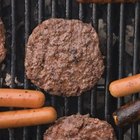
How to Cook a Frozen Beef Patty ...
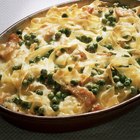
How Long to Bake a Pre-Cooked Frozen ...

How to Make Dinners Ahead of Time Using ...
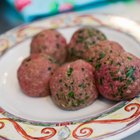
How to Cook Oven-Browned Meatballs

Can You Freeze Leftover Dough From a ...
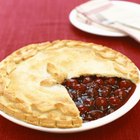
Should I Let Pastry Shells Thaw Before ...
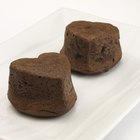
What Is a Souffle Dish?
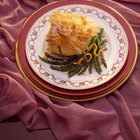
How to Quickly Defrost Phyllo
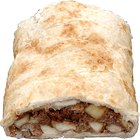
How to Freeze Stromboli

Freezing a Moussaka

How Long Do I Cook Frozen Package ...

How Long Is Leftover Spaghetti Good to ...
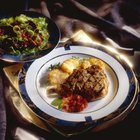
What Is the Fastest Way I Can Defrost ...
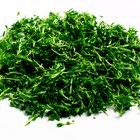
How to Bake Frozen Spanakopita

How to Set a Festina Watch
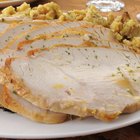
How to Reheat Sliced Turkey
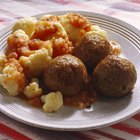
How to Marinate Meatballs

How to Cook Pancetta
References
- USDA: Focus on Freezing
- "Crock Pot Owner's Guide"; 2001
- West Virginia University: Holiday Recipes
- USDA; Is It Done Yet?; June 2011
Resources
Writer Bio
Kristie Brown is a publisher, writer and editor. She has contributed to magazines, textbooks and online publications. Brown holds a Bachelor of Arts in English from the University of Texas at Austin.
Photo Credits
Brand X Pictures/Brand X Pictures/Getty Images